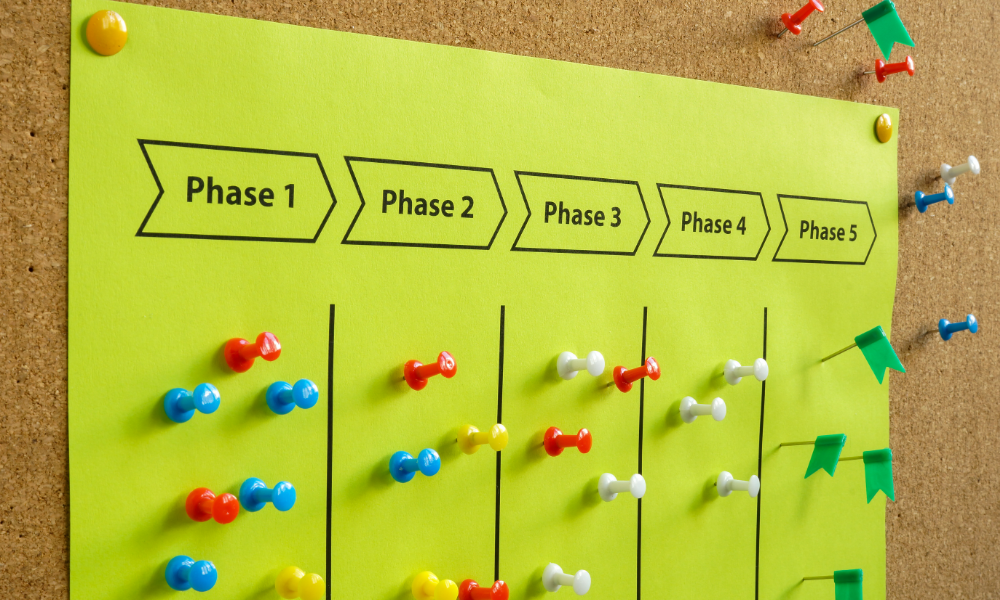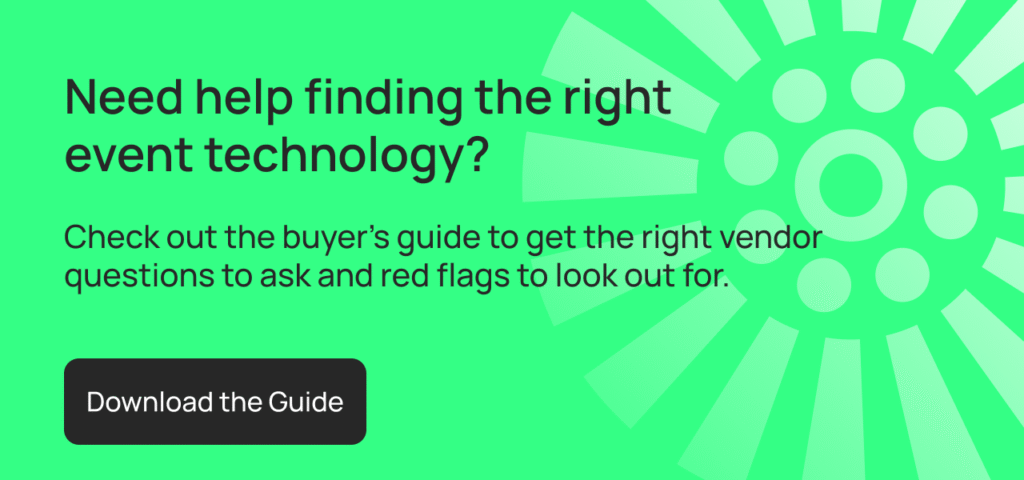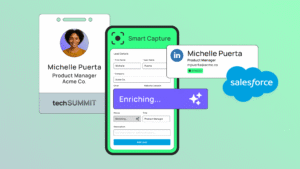
Every event tells a story. But too often, planners only see a single chapter — the logistics of the day itself.
The truth is, your attendees experience so much more than just the event. From the moment they see your first invite, to how they register, to the interactions they have during your sessions, and even how you follow up afterward — it all adds up to what’s known as the attendee journey.
When planners understand and map this journey, events stop being one-time transactions and start becoming powerful relationship-builders. That’s the difference between an event that fades from memory and one that strengthens long-term loyalty, donations, enrollment, or customer engagement.
The challenge? Tracking the attendee journey can be tough when data lives in multiple tools or scattered spreadsheets, especially when event data isn’t connected to your CRM.
What Is the Attendee Journey?
When you look at events through the lens of the attendee journey, you see that the role of events is to create a connected story from start to finish. At its core, the attendee journey is the complete experience a person has with your event before, during, and after.
Pre-Event
The journey begins the moment someone receives your invitation or first hears about your event. This stage includes registration, email communications, and event website visits.
Want to learn how to handle event registration like a pro? Read more here.
During-Event
This is where attendees participate in sessions, engage with speakers, and network with peers. Every interaction creates an opportunity to capture engagement data and improve the overall experience.
Post-Event
The journey doesn’t end when the lights go down. Surveys, thank-you emails, and ongoing engagement are just as important for building loyalty and measuring event success.
Why the Attendee Journey Matters More Than Ever
Attendee expectations have changed. Today’s audiences expect personalization, smooth experiences, and clear value from the events they attend. Here’s why mapping the attendee journey is more important than ever.
Engagement Drives ROI
When you understand how attendees engage at each step, you can tailor content and experiences that lead to stronger results, whether that’s more applications, higher donations, or increased sales.
Data Tells the Bigger Story
Tracking the full journey gives you insights you can’t get from attendance numbers alone. You’ll see where attendees drop off, what excites them most, and how their engagement connects to long-term outcomes.
Competitive Edge
Attendees have more choices than ever. By creating a thoughtful journey, you deliver experiences that stand out and make people want to return.
Common Roadblocks to Tracking the Attendee Journey
If following the attendee journey were easy, every planner would already be doing it. In reality, there are some common challenges:
- Data is scattered across registration tools, event apps, and marketing platforms.
- Spreadsheets are still the default for combining data, which means more manual work and less time for strategy.
- Personalization is difficult when information about attendees isn’t unified.
- Post-event insights get lost, making it hard to prove ROI or plan for the next event.
These challenges make it easy to get stuck in a cycle of logistics management, instead of focusing on engagement and outcomes.
What to Look for in Event Management Tools
The right tools can make or break your ability to map the attendee journey. Here’s what to look for if you want to capture engagement without adding extra work:
Coverage of All Touchpoints
Tools should collect data from pre-event, during-event, and post-event interactions. This includes registration activity, participation in live sessions, and follow-up survey results.
Built-In Engagement Features
Look for platforms that support Q&A, networking, and agenda participation. These not only improve the attendee experience but also give planners richer engagement data.
Clear, Actionable Reporting
Good tools make reporting simple by automatically turning engagement data into dashboards and insights. This eliminates the need for manual exports and makes it easier to spot trends.
Native to Your CRM
If you’re already using Salesforce, look for tools that are Salesforce-native. This ensures that every attendee touchpoint from registration to post-event engagement flows into your CRM without exports or manual work.
With the right engagement tools, planners can finally move beyond spreadsheets and start seeing the bigger picture of how events impact their organization.
How to Map the Attendee Journey
Once you understand the stages and have the right tools in place, you can start mapping the attendee journey for your events. Here’s how.
Pre-Event
Track how people discover your event, where they come from (email, social media, referrals), and how they interact with your website and registration form. Use this data to personalize outreach and improve conversions.
During-Event
Pay attention to which sessions attract the most interest, how attendees use networking opportunities, and what engagement features they interact with. These signals show you what resonates.
Post-Event
Follow up with surveys to measure satisfaction, and connect event data to future behaviors. Did they attend another event? Donate? Apply? Buy? This closes the loop on the journey.
For organizations using Salesforce, this is where the real power comes in. Post-event surveys, follow-ups, and ongoing engagement all tie directly back to attendee records, with every touchpoint flowing directly into the CRM. This creates a connected journey you can measure and optimize not just for a single event, but across an entire series of engagements over time.
Examples of Improving the Attendee Journey
Here are a few ways organizations can bring the attendee journey to life.
Higher Education
Universities can track a prospective student’s journey starting with a campus tour, continuing with recruitment events, and ultimately resulting in an application. With event attendance data connected to Salesforce, schools gain visibility into the student lifecycle and can personalize outreach along the way.
Advancement teams also benefit from attendee journey data. They can see which alumni or donors are engaging with campus events, segment their outreach accordingly, and send personalized follow-ups that build stronger connections. This not only strengthens donor relationships but also helps advancement teams identify new giving opportunities and nurture long-term support.
The result: This level of insight helps institutions improve student conversion rates, meet enrollment goals, and drive better advancement outcomes.
Nonprofits
Donor journeys often begin with a fundraising event, followed by continued engagement through targeted communications, and eventually grow into recurring giving. By capturing every interaction, nonprofits can see which events inspire long-term support and nurture stronger donor relationships. Attendance and engagement tracking also helps nonprofits know exactly who to follow up with, whether it’s sending a personalized thank-you to a donor or encouraging a volunteer to take the next step in their involvement.
The result: This personalized approach leads to stronger donor retention and a more active volunteer base.
Healthcare
Healthcare organizations host a wide range of events, from patient education sessions to continuing medical education (CME) for providers. A patient’s journey might include registering for a wellness webinar, attending a screening event, and receiving follow-up reminders that reduce no-shows for future appointments. On the provider side, CME participants may engage in conferences or workshops and then continue their learning online.
The result: By tracking these journeys, organizations can better measure CME participation, ensure compliance, and support ongoing professional development, leading to more effective care delivery and stronger clinician engagement.
Manufacturing
For manufacturers, the attendee journey may begin at an industry trade show booth, progress through a product demonstration event, and lead to follow-up meetings with sales. When these touchpoints are tracked in Salesforce, planners and sales teams can clearly see how events influence pipeline and purchasing decisions.
The result: This visibility helps manufacturing companies shorten sales cycles and increase deal velocity.
Financial Services
In financial services, prospective clients may attend a wealth management seminar, participate in a private networking dinner, and later schedule a one-on-one meeting with an advisor. Mapping this attendee journey helps firms understand which events drive trust, referrals, and eventual account growth.
The result: With this insight, financial services organizations can improve client acquisition and strengthen long-term relationships.
Corporate
Corporations often run a mix of internal events (town halls, leadership workshops, training sessions) and external events (customer conferences, partner summits, product launches).
An employee’s journey might begin by registering for a professional development workshop, continue with active participation during training, and conclude with a follow-up survey that informs HR about skills gaps and engagement levels. Externally, customer or partner journeys may start with a large-scale conference, deepen through smaller breakout sessions or networking events, and lead to ongoing conversations with account teams.
The result: By tracking these attendee journeys, corporate event teams can demonstrate the impact of events on employee engagement, customer retention, and pipeline growth, ultimately proving the ROI of their event strategy.
These examples show how the attendee journey is never just about one event. It’s about the cumulative experience that builds trust and engagement over time.
The Future of Event Planning Is Journey-Centric
Event planning is evolving. Simply delivering a smooth check-in or a packed agenda is no longer enough. The planners who will thrive in the future are those who understand and follow the attendee journey.
By thinking journey-first, you shift from executing one-off experiences to creating relationship-driven programs. That’s how events stop being cost centers and start becoming growth engines.
Want more ideas on creating better attendee experiences? Explore more articles in our Event Management Content Hub.



